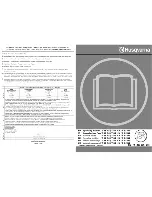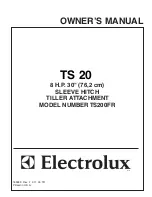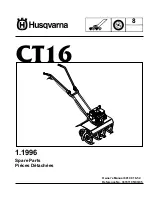
MCAC-ATSM-2017-08 Aqua Tempo Power Series (with LAK) air cooled scroll chiller unit (50Hz)
77
4. The power supply was cut off and needn’t change the water in system.
Ethylene and Propylene Glycol Factors
A glycol solution is required when the unit with condition as mentioned. The use of glycol will reduce the
performance of the unit depending on concentration.
Ethylene Glycol
Quality of glycol%
Modification coefficient
Freezing
point
Cooling capacity
modification
Power
modification
Water
resistance
Water flow
modification
0
1.000
1.000
1.000
1.000
0
10
0.984
0.998
1.118
1.019
-4.000
20
0.973
0.995
1.268
1.051
-9.000
30
0.965
0.992
1.482
1.092
-16.000
40
0.960
0.989
1.791
1.145
-23.000
50
0.950
0.983
2.100
1.200
-37.000
Propylene Glycol
Quality of glycol%
Modification coefficient
Freezing
point
Cooling capacity
modification
Power
modification
Water
resistance
Water flow
modification
0
1.000
1.000
1.000
1.000
0
10
0.976
0.996
1.071
1.000
-3.000
20
0.961
0.992
1.189
1.016
-7.000
30
0.948
0.988
1.380
1.034
-13.000
40
0.938
0.984
1.728
1.078
-22.000
50
0.925
0.975
2.150
1.125
-35.000
Units operating with glycol solutions are not included in the ARI Certification Program.
Altitude correction factors
Performance tables are based at sea level. Elevations other than sea level affect the performance of the unit.
The decreased air density will reduce condenser capacity and reduce the unit’s performance. For
performance at elevations other than sea level refer to Table 3. Maximum allowable altitude is 1800meters.
Evaporator temperature drop factors
Performance tables are based on a 5
o
C temperature drop through the evaporator. Adjustment factors for
applications with temperature ranges from 3 to 6 in follow table. Temperature drops outside this range
can affect the control system’s capability to maintain acceptable control and are not recommended.
Fouling factor
Fouling refers to the accumulation of unwanted material on solid surfaces, most often in an aquatic
environment. The fouling material can consist of either living organisms (biofouling) or a non-living
substance (inorganic or organic). Fouling is usually distinguished from other surface-growth phenomena in
that it occurs on a surface of a component, system or plant performing a defined and useful function, and
that the fouling process impedes or interferes with this function.
Other terms used in the literature to describe fouling include: deposit formation, encrustation, crudding,
deposition, scaling, scale formation, slagging, and sludge formation. The last six terms have a more narrow
meaning than fouling within the scope of the fouling science and technology, and they also have meanings
outside of this scope; therefore, they should be used with caution.
Fouling phenomena are common and diverse, ranging from fouling of ship hulls, natural surfaces in the
marine environment (marine fouling), fouling of heat-transfer components through ingredients contained in
the cooling water or gases, and even the development of plaque or calculus on teeth, or deposits on solar
panels on Mars, among other examples.
Foreign matter in the chilled water system will adversely affect the heat transfer capability of the evaporator,
and could increase the pressure drop and reduce the water flow. To provide optimum unit operation, proper
water treatment must be maintained. Refer to the able as following.
Summary of Contents for KEM-30 DNH3
Page 2: ......
Page 5: ...2 1 2 External appearance KEM 130 HN3 KEM 200 HN3 KEM 250 HN3 KEM 30 DHN3 KEM 65 DHN3 ...
Page 33: ...30 130kW module ...
Page 35: ...32 250kW module ...
Page 39: ...36 200kW module ...
Page 73: ...130kW module 200kW module Input of airflow Input of airflow Input of airflow Input of airflow ...
Page 159: ......
Page 160: ......
















































